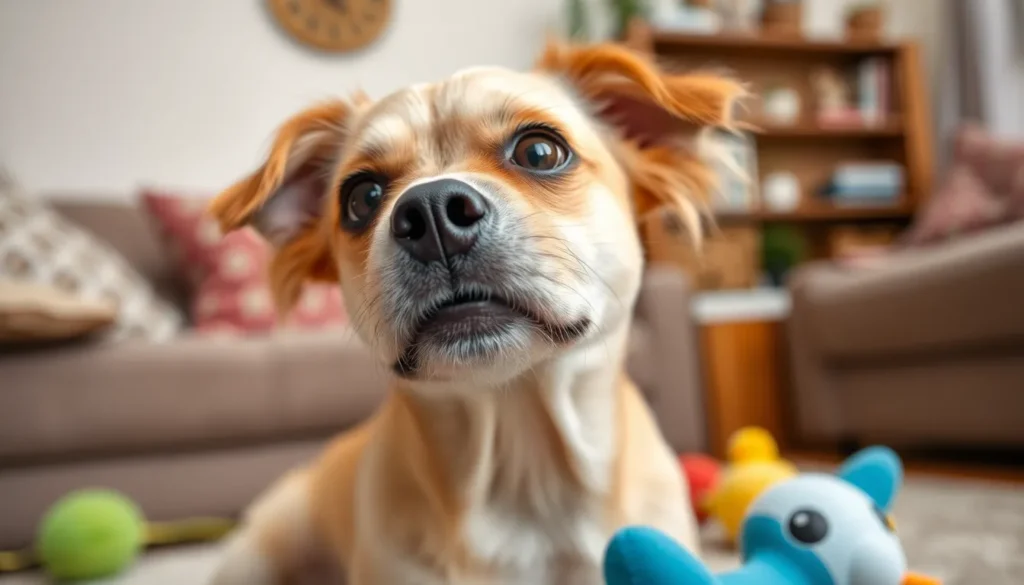Table of Contents
TogglePicture this: your beloved pup suddenly starts making bizarre snorting sounds that could rival a pig in a mud bath. While it might seem like a scene straight out of a comedy, reverse sneezing in dogs raises some eyebrows among pet owners. Is it just a quirky canine quirk or something more concerning?
Fear not! This phenomenon is often harmless and can leave you chuckling at your dog’s unexpected performance. However, understanding the ins and outs of reverse sneezing is essential for every dog parent. After all, a little knowledge can turn panic into laughter and ensure your furry friend stays healthy and happy. Let’s dive into the world of reverse sneezing and uncover whether it’s a cause for concern or just another reason to love our goofy companions.
Understanding Reverse Sneezing in Dogs
Reverse sneezing in dogs occurs when a dog rapidly inhales air through the nose instead of exhaling. This action may seem unusual but is often harmless and temporary.
What Is Reverse Sneezing?
Reverse sneezing represents a spasm of the throat muscles that causes the dog’s airway to constrict. During this spasm, dogs produce a sound that resembles a honking or snorting noise. Many pet owners may confuse this with traditional sneezing or respiratory distress. It’s helpful to observe the dog’s body language during these episodes. Signs of distress or prolonged duration might warrant a consultation with a veterinarian.
Common Causes of Reverse Sneezing
Several factors can trigger reverse sneezing in dogs. Environmental irritants, such as dust, pollen, and strong odors, often play a role. Additionally, excitement or physical exertion can provoke an episode. Allergies contribute to the occurrence as well, affecting the respiratory tract. Some dogs may experience reverse sneezing due to throat inflammation or nasal congestion. Identifying the cause often alleviates concerns regarding the behavior.
Is Reverse Sneezing Dangerous?

Reverse sneezing typically isn’t dangerous, but certain situations warrant attention. Pet owners should monitor their dogs for signs of distress during episodes. Noticing prolonged or frequent occurrences may indicate an underlying issue that deserves investigation.
When to Be Concerned
Signs of concern include excessive reverse sneezing episodes or difficulty breathing following an episode. If a dog shows weakness, lethargy, or changes in appetite, seeking veterinary advice promptly becomes crucial. Additionally, reverse sneezing accompanied by discharge from the nose or mouth can indicate a more serious condition that requires immediate attention. Observers should track the frequency and duration of these episodes to inform the veterinarian adequately.
Potential Underlying Health Issues
Several health issues might trigger reverse sneezing, including allergies and respiratory infections. Allergies often cause inflammation, leading to reversals in sneezing patterns. Respiratory infections can cause coughing, wheezing, or nasal discharge. Moreover, anatomical problems like brachycephalic airway syndrome in certain breeds naturally predispose dogs to reverse sneezing. Tumors or foreign objects stuck in the throat could also lead to episodes. Understanding these potential issues allows for appropriate response and care.
How to Manage Reverse Sneezing
Managing reverse sneezing in dogs requires practical approaches. Owners can often address mild cases at home using simple remedies.
Home Remedies
Calming the dog during an episode can ease their discomfort. Pet owners should gently rub the dog’s throat or cover its nostrils briefly to encourage swallowing. Offering a glass of water may help soothe the throat. Reducing environmental irritants like dust and pollen also minimizes triggers. Creating a calm atmosphere can alleviate stress, which is a common cause of reverse sneezing. Regular cleaning of the dog’s environment contributes to fewer irritants.
When to Seek Veterinary Help
Monitoring the frequency and duration of reverse sneezing is essential. If episodes occur excessively or lead to difficulty breathing afterward, a veterinarian’s evaluation becomes crucial. Signs such as lethargy or changes in appetite warrant immediate attention. Bringing the dog to a vet is advisable if coughing or nasal discharge accompanies reverse sneezing. Investigating potential underlying health issues ensures appropriate care and intervention is provided. Taking these steps promotes the dog’s overall well-being and health.
Understanding reverse sneezing in dogs is essential for every pet owner. While it may seem concerning at first glance it’s typically a harmless occurrence. Recognizing the triggers and knowing how to respond can ease anxiety during episodes.
However, vigilance is key. If reverse sneezing becomes frequent or is accompanied by other troubling symptoms it’s important to consult a veterinarian. This ensures any underlying health issues are addressed promptly, keeping dogs happy and healthy. By staying informed and proactive, pet owners can confidently navigate this quirky behavior.







